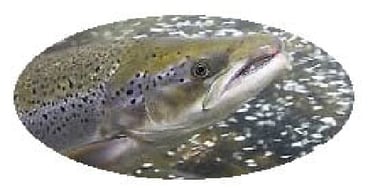To enhance and control the production and quality of seafood grown and harvested.
The industry increasingly focuses on constructing in-house aquaculture fish farms, commonly called aqua farming. The most popular species of aqua farming continue to be salmon, tilapia, catfish, and carp. Increased interest in the United States has developed aqua farming facilities in southern Florida with favorable climate and water conditions.

When considering several types of fish species to grow for harvest, it is important to remember the need to control the water quality. If the aqua farm is intended to utilize man-made tanks, they will depend upon a constant flow of incoming water. If the aqua farm focuses on salmon, the water quality and temperature play a major role in the operation's mortality rates and production yields.
Having water with too high of hydrogen sulfide, carbon dioxide, total Organic carbons, and even turbidity can increase mortality rates among the younger fish species and is especially critical to salmon.
Having high levels of metals
Such as Iron that is identified as either “ferric” (Fe-) or “ferrous” (FE+2) and is naturally occurring within the Florida waters and other parts of the US will cause significant damage to young salmon species because the metal accumulates within the gills of the fish causing suffocation. Other metals are also detrimental to fish, including copper, aluminum, arsenic, cadmium, chromium, Lead, manganese, and mercury, to name a few, and the water quality must be evaluated and tested in the early stages of design to anticipate the required types of process systems needed.
Utilizing pressure filtration
It's an excellent method to remove metals and oxidize iron without adding harmful chemicals that may impact fish mortality rates and growth and certainly will increase operating costs. DeLoach Industries specializes in the design and manufacturing of water purification equipment for the aquaculture and pisciculture industry, and they have been designing and supplying process water purification systems, including degasification, reverse osmosis, ion exchange, pressure filtration, and ultraviolet disinfection systems for the past 60 years. The best way to remove harmful contaminants like hydrogen sulfide (H2S) is with an application called degasification. Degasification strips the hydrogen sulfide gas from the water and removes harmful carbon dioxide levels. Any iron (Fe+2) present during this process will oxidize with proper pH control.
After oxidation, the water can be pumped through pressure filtration units. This will remove the oxidized solids and other suspended solids greater than 15 microns in size. This selection and treatment method provides the lowest operating cost and minimizes the impact on salinity rates if the species requires brackish to saltwater conditions.
Controlling water quality
It is science, and removing or treating one contaminant can often bring about undesirable changes in the water quality if the wrong process is selected, leading to increase operating costs and low production rates. An example is the need to adjust pH properly to allow a degasification process or iron removal process through pressure filtration to perform properly. When reverse osmosis is used, pH adjustment is often required to reduce the solids level to below 2 or 3 microns. However, reverse osmosis may remove too many salts from the process stream if the desired water quality includes higher salinity levels. These different variables are the reasons to seek out water professionals like the ones at DeLoach Industries Inc. DeLoach Industries has 60 years of experience in the technologies like reverse osmosis, degasification, decarbonation, pH control, and water pressure filtration down to levels of 0.5 microns. For more information or to learn more, contact the professionals at DeLoach Industries Inc. at (941) 371-4995.




